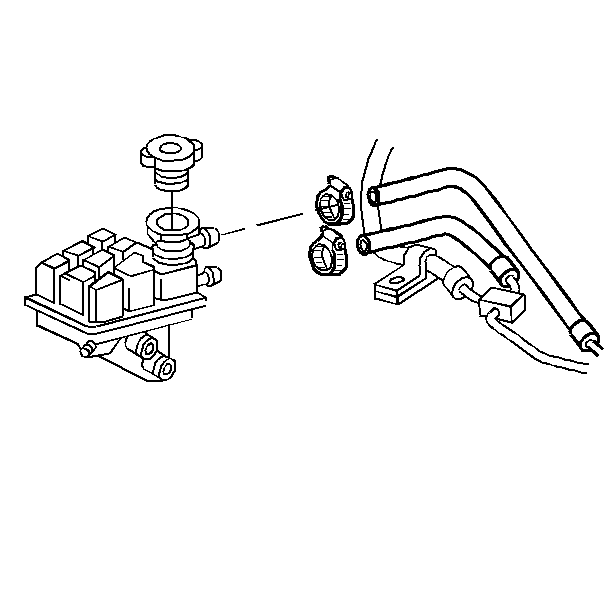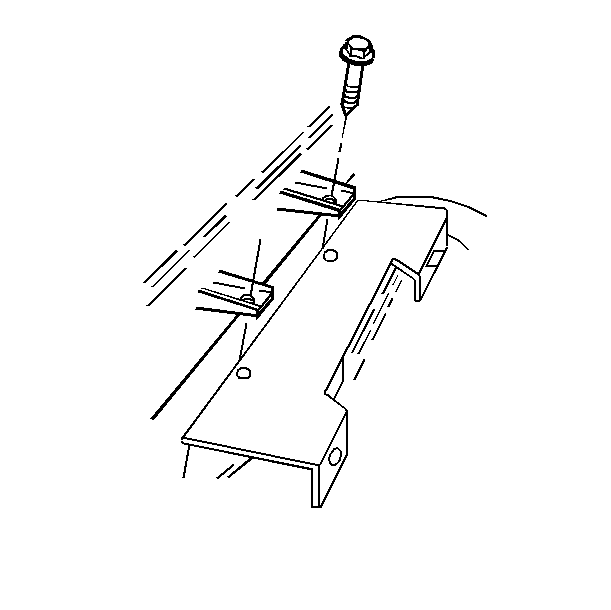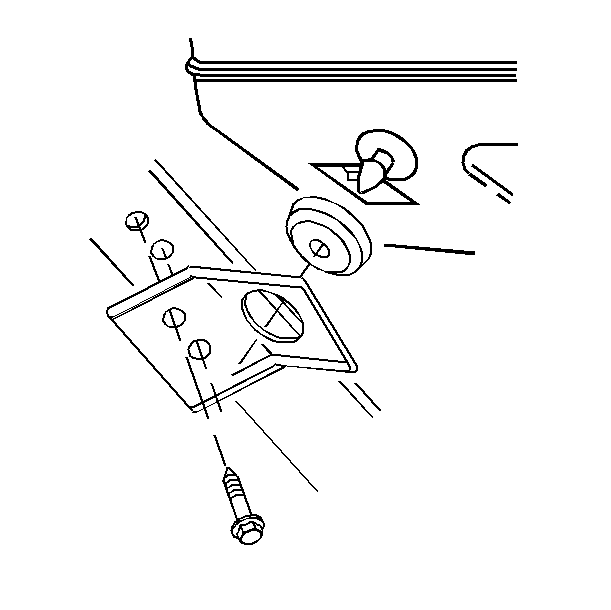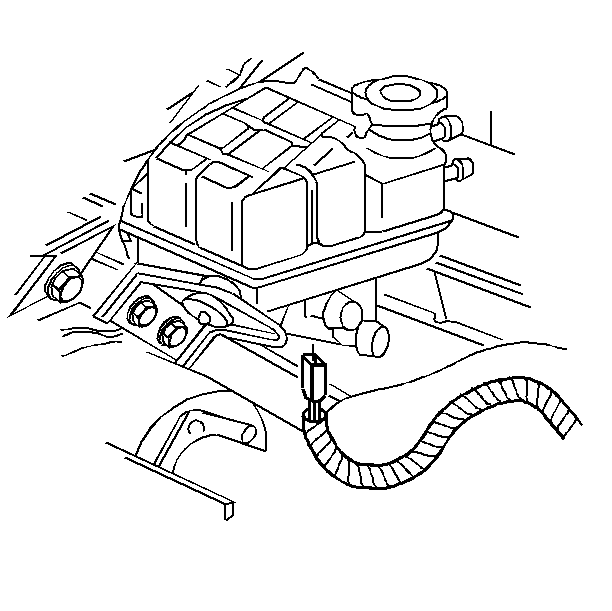Removal Procedure
Tools Required
J 38185 Spring Hose Clamp Pliers
- Remove the surge tank cap.
- Remove the clamps and the inlet/outlet hoses from the radiator surge tank.
- Drain the coolant from the radiator surge tank. Refer to Cooling System Draining and Filling .
- Remove the screws retaining the radiator surge tank to the evaporator housing.
- Disengage the reservoir from the grommet.
- Remove the electrical connector from the reservoir level sensor.
- Remove the surge tank from the vehicle.
Caution: With a pressurized cooling system, the coolant temperature in the radiator can be considerably higher than the boiling point of the solution at atmospheric pressure. Removal of the surge tank cap, while the cooling system is hot and under high pressure, causes the solution to boil instantaneously with explosive force. This will cause the solution to spew out over the engine, the fenders, and the person removing the cap. Serious bodily injury may result.
Notice: When adding coolant, use DEX-COOL® coolant. If silicated coolant is added to the system, premature engine, heater core or radiator corrosion may result. In addition, the engine coolant will require change sooner-at 50 000 km (30,000 mi) or 24 months.




Installation Procedure
- Install the surge tank.
- Install the electrical connector to the reservoir level sensor.
- Install the radiator surge tank into the grommet.
- Install the screws retaining the reservoir to the evaporator housing.
- Install the hoses and clamps to the surge tank.
- Refill the cooling system. Refer to Cooling System Draining and Filling .
- Install the surge tank cap.
- Start the engine. Check for coolant leaks.



Tighten
Tighten the radiator surge tank screws to 10 N·m (89 lb in).
Notice: Use the correct fastener in the correct location. Replacement fasteners must be the correct part number for that application. Fasteners requiring replacement or fasteners requiring the use of thread locking compound or sealant are identified in the service procedure. Do not use paints, lubricants, or corrosion inhibitors on fasteners or fastener joint surfaces unless specified. These coatings affect fastener torque and joint clamping force and may damage the fastener. Use the correct tightening sequence and specifications when installing fasteners in order to avoid damage to parts and systems.

